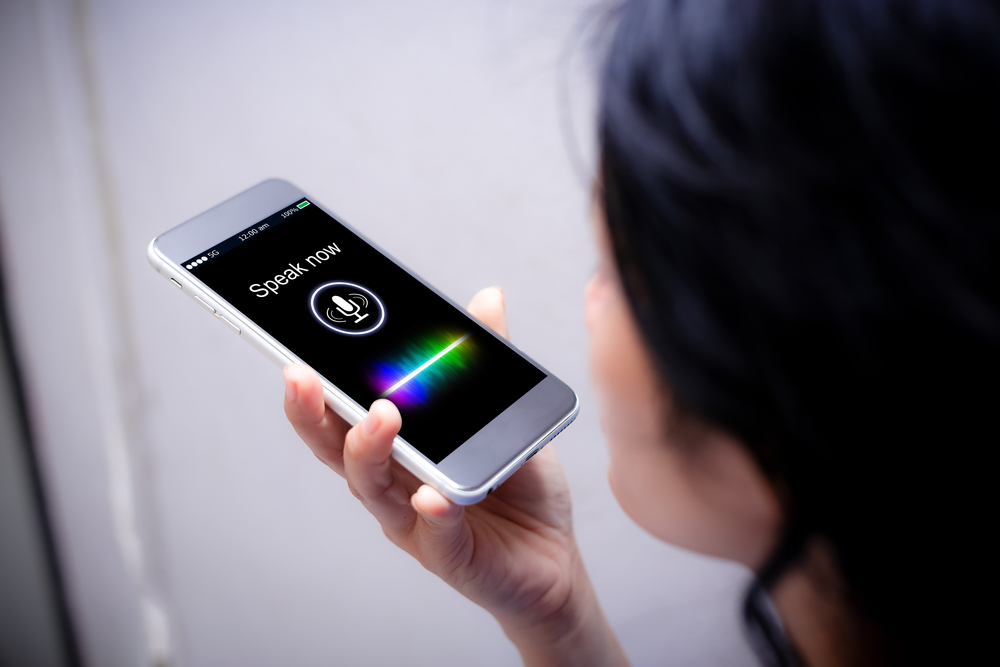
“Alexa, start the meeting!” I’m guessing that phrase will soon become a common one in business conference rooms around the globe as Amazon’s Alexa seeks to take over the admin side of business meetings. That is, unless Watson Assistant, Google Assistant, and CiscoSpark take it over first.
Move Over, Screen Fatique
It turns out we have a love/hate relationship with our screens. Yes, we love looking at our phones. But at some point, checking our phones for directions, factoids, music selection, text messages, and talking gets tedious and tiring. That phone fatigue is where Alexa and the other voice bots first wedged in. It allows humans to enjoy the benefits of technology without ever having to touch it. And although I personally often feel like Siri needs her ears cleaned out when I voice text through her, researchers believe 30 percent of all searches will be done without a screen by 2020. That’s putting a heck of a lot of trust into voice control.
Indeed, research shows voice recognition is set to be a $500 million industry by 2019. Considering Alexa is just as common as the average cell phone now, I’d be willing to bet we’ll surpass that mark and then some, especially as our voice-controlled assistants find their calling in an office setting—specifically in the oft-dreaded conference room.
Why in the Conference Room?
In the most basic terms, a voice-controlled conference room is all about efficiency. It’s like having a personal assistant set up the call and all related equipment, keep time per the agenda, type up notes for reference, translate those notes into other languages if necessary, and even send them out automatically once the meeting is over. Sounds like heaven, right? And those services are already here—or about to be.
Amazon rolled out Alexa for Business last year, a service that connects to all of your video conferencing equipment and devices. But it does far more than that. It can re-order office supplies, make hands-free calls, schedule meeting spaces, or automatically alerting tech teams to device errors. Similarly, Google, says its assistant is already available on 400 million (!!!) devices worldwide, including speakers, tablets, headphones, watches, and TVs. In short, voice-controlled business apps create freed-up pockets of time so employees can be more productive where it counts. Even better: you’ll no longer need to worry about forcing your employees to huddle around a tiny phone speaker during too-long conference calls. They can spread out and manage their own productivity throughout the meeting—all without ever having to YELL TO ENSURE THEY’RE HEARD! (Conference phone pet peeve #1.)
What Do I Need to Know to Get Started?
First, voice control is meant to make your life easier, not more complicated. But it will demand a bit of technical focus along the way. For instance, if you’re integrating Alexa Voice Service into your company tech, you’ll need to consider things like privacy, access, compatibility and other issues before making a clean sweep to voice control. You’ll also want to make sure you have the budget for high quality cameras, microphones, AV systems, and other tech to help make booking of the conference room easier. For instance, you’ll want to consider installing sensors to detect whether the room is occupied or free, and/or create digital signs to display outside the room alerting passersby that the room is in use. Those elements—along with proper lighting and comfort—will go a long way in ensuring the conference room is a place that employees enjoy going—not one that is quickly avoided.
Will there be glitches? Of course. When it comes to technology, there always are. But the promise of AI and voice control to increase efficiency in the workplace is astounding. In the future, for instance, Cisco Spark Assistant plans to leverage and learn from employee’s calendars, company directory, and interaction in Cisco Spark-supported spaces. Just like Watson Assistant, it gets smarter the more you use it. My point being: sometime soon, voice control will be doing more than starting meetings and booking conference rooms. It may actually be running them.
Daniel Newman is the Principal Analyst of Futurum Research and the CEO of Broadsuite Media Group. Living his life at the intersection of people and technology, Daniel works with the world’s largest technology brands exploring Digital Transformation and how it is influencing the enterprise. From Big Data to IoT to Cloud Computing, Newman makes the connections between business, people and tech that are required for companies to benefit most from their technology projects, which leads to his ideas regularly being cited in CIO.Com, CIO Review and hundreds of other sites across the world. A 5x Best Selling Author including his most recent “Building Dragons: Digital Transformation in the Experience Economy,” Daniel is also a Forbes, Entrepreneur and Huffington Post Contributor. MBA and Graduate Adjunct Professor, Daniel Newman is a Chicago Native and his speaking takes him around the world each year as he shares his vision of the role technology will play in our future.

